Soldiers have been trying to disguise themselves since at least the Trojan War. But as MIT historian of technology Hanna Rose Shell has detailed in her research, no concerted effort to develop systematic forms of camouflage existed until the 20th century. In her new book, Hide and Seek, published this spring by Zone Books, Shell describes how the use of camouflage became a standard military practice, and how the act of camouflaging soldiers quickly became a major part of war imagery in films, books and more. Shell spoke to MIT News about her work.
Q. How do you define camouflage, and what are its origins?
A. I’ll begin with the word itself. The term “camouflage” was coined in the French press in 1914, and absorbed into English and American lexicon almost immediately after its introduction early in World War I. Camouflage itself came into being as response to the real or imagined threat of photographic detection. In World War I, this threat came from sniper scopes, periscopes and a whole range of rapidly evolving systems for aerial photographic reconnaissance. What distinguishes visual camouflage from other kinds of military deception that have been practiced for millennia is this historical and practical connection to optical surveillance beyond that of the human eye.
The main focus of my book is on the period between the late 19th century and World War II, but I also show how photographic camouflage is present in military research today. What I call an enduring “chameleonic impulse” continues to motivate military R&D of wearable camouflage technologies. There is also an ongoing quest to develop “invisible cloaks” to serve simultaneously as skins and … screens onto which one’s visual environment might be projected.
Many times, people’s first association with camouflage is with the natural world — it’s often the story of the evolution of the “peppered moth” that schoolchildren learn in biology class. But it’s only when humans had to hide from the camera and other optical devices that animal protective concealment began to fascinate people … and then became a model for the development of new human technologies.
Q. How is camouflage itself evolving today, and how does it relate to photographic surveillance?
A. Contemporary manifestations of photographic camouflage are everywhere, even when it’s hard to identify a perceived need to “hide” from cameras. Consider the military and sportsman communities. In 2002, the U.S. Army, among other military branches, shifted from the old curvilinear M81 Woodland Pattern to the new “digital” camouflage pattern that features a “pixilated” pattern of tiny squares of beige, olive and gray. Meanwhile, the camouflage most hunters are wearing these days, as well as what’s covering hunting rifles, canteens and even pickup trucks, is what I call “photorealist,” in the sense that photographs of the type of environment a hunter wants to hide in is, in fact, the actual textile print; the photograph becomes the clothing. Ironically, this does not necessarily serve to trick animals so well — nor, I have been told by those designing the new uniforms, do the pixilated army uniforms necessarily do a better job tricking digital surveillance equipment. However, it represents our own embeddedness in a photographic — and increasingly surveyed — digital environment more generally.
Q. Your book discusses the ways camouflage seeps into the larger culture. What are some interesting places where this is happening today?
A. “Camouflage consciousness” has been creeping into the broader cultural and social landscape for the last century. In the early 20th century, Cubism both inspired and was deeply affected by the early developments of camouflage. Now “dynamic camouflage” is part of 21st-century media environments, most directly in first-person shooter and stealth-based video games. Players enter into these immersive [games] within which they are constantly shifting their positions, finding new forms of camouflage as they engage in a dynamic of perpetual hiding and seeking. “Metal Gear Solid: Snake Eater” and “Battlefield 2” are two such games I’ve recently been trying out. In my own research, I’ve been interviewing game designers and aficionados, as well as players restaging game scenarios to build alternative stealth-based narratives. I’m currently writing an article that relates contemporary gaming practices to the 20th-century history of the sniper, and in particular aspects of snipers’ psychological training via simulations and innovative instructional films. And I’m planning to do a short oral history project, interviewing veteran military snipers about their experiences learning how to see everything, while not being seen.
Historian of technology’s new book traces the surprisingly recent invention of a standard military practice.
Publication Date:

Caption:
These color plates, from the 'Art of Disappearance' portfolio in Hanna Rose Shell's book <i>Hide and Seek,</i> represent the attention paid to naturally existing forms of protective coloration around the time that 'camouflage' got its name, and began to serve as a model for a new set of human technologies of strategic concealment; they draw from the collection of artist and natural historian Abbott Handerson Thayer.
Credits:
Reprinted from <i>Concealing Coloration in the Animal Kingdom</i> (1909)
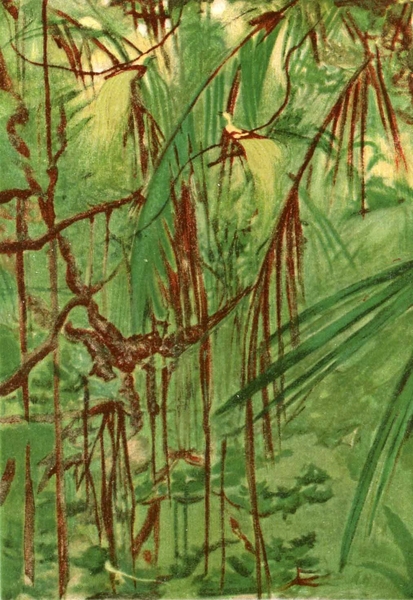
Caption:
These color plates, from the 'Art of Disappearance' portfolio in Hanna Rose Shell's book <i>Hide and Seek,</i> represent the attention paid to naturally existing forms of protective coloration around the time that 'camouflage' got its name, and began to serve as a model for a new set of human technologies of strategic concealment; they draw from the collection of artist and natural historian Abbott Handerson Thayer.
Credits:
Reprinted from <i>Concealing Coloration in the Animal Kingdom</i> (1909)

Caption:
These color plates, from the 'Art of Disappearance' portfolio in Hanna Rose Shell's book <i>Hide and Seek,</i> represent the attention paid to naturally existing forms of protective coloration around the time that 'camouflage' got its name, and began to serve as a model for a new set of human technologies of strategic concealment; they draw from the collection of artist and natural historian Abbott Handerson Thayer.
Credits:
Reprinted from <i>Concealing Coloration in the Animal Kingdom</i> (1909)

Caption:
These color plates, from the 'Art of Disappearance' portfolio in Hanna Rose Shell's book <i>Hide and Seek,</i> represent the attention paid to naturally existing forms of protective coloration around the time that 'camouflage' got its name, and began to serve as a model for a new set of human technologies of strategic concealment; they draw from the collection of artist and natural historian Abbott Handerson Thayer.
Credits:
Reprinted from <i>Concealing Coloration in the Animal Kingdom</i> (1909)

Caption:
These color plates, from the 'Art of Disappearance' portfolio in Hanna Rose Shell's book <i>Hide and Seek,</i> represent the attention paid to naturally existing forms of protective coloration around the time that 'camouflage' got its name, and began to serve as a model for a new set of human technologies of strategic concealment; they draw from the collection of artist and natural historian Abbott Handerson Thayer.
Credits:
Courtesy of the Smithsonian American Art Museum [SAAM 1950.2.41]
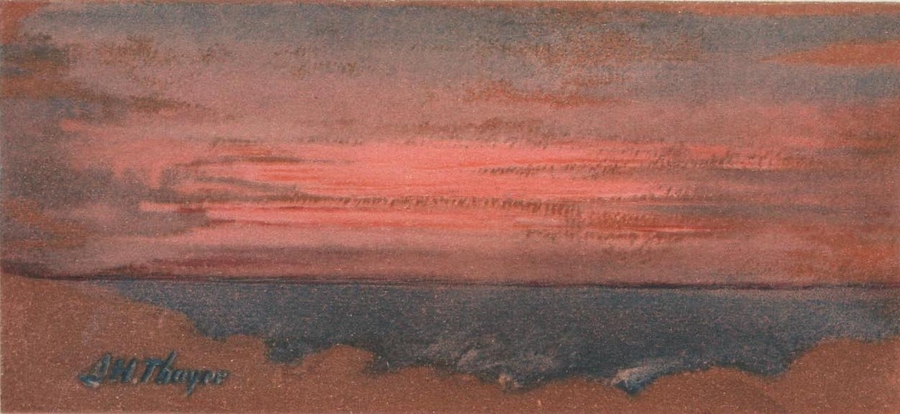
Caption:
These color plates, from the 'Art of Disappearance' portfolio in Hanna Rose Shell's book <i>Hide and Seek,</i> represent the attention paid to naturally existing forms of protective coloration around the time that 'camouflage' got its name, and began to serve as a model for a new set of human technologies of strategic concealment; they draw from the collection of artist and natural historian Abbott Handerson Thayer.
Credits:
Reprinted from <i>Concealing Coloration in the Animal Kingdom</i> (1909)
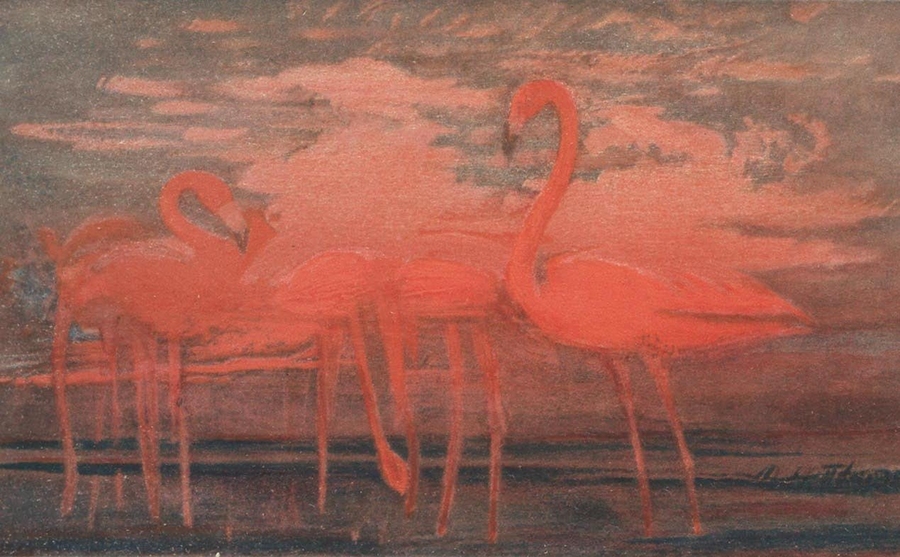
Caption:
These color plates, from the 'Art of Disappearance' portfolio in Hanna Rose Shell's book <i>Hide and Seek,</i> represent the attention paid to naturally existing forms of protective coloration around the time that 'camouflage' got its name, and began to serve as a model for a new set of human technologies of strategic concealment; they draw from the collection of artist and natural historian Abbott Handerson Thayer.
Credits:
Reprinted from <i>Concealing Coloration in the Animal Kingdom</i> (1909)
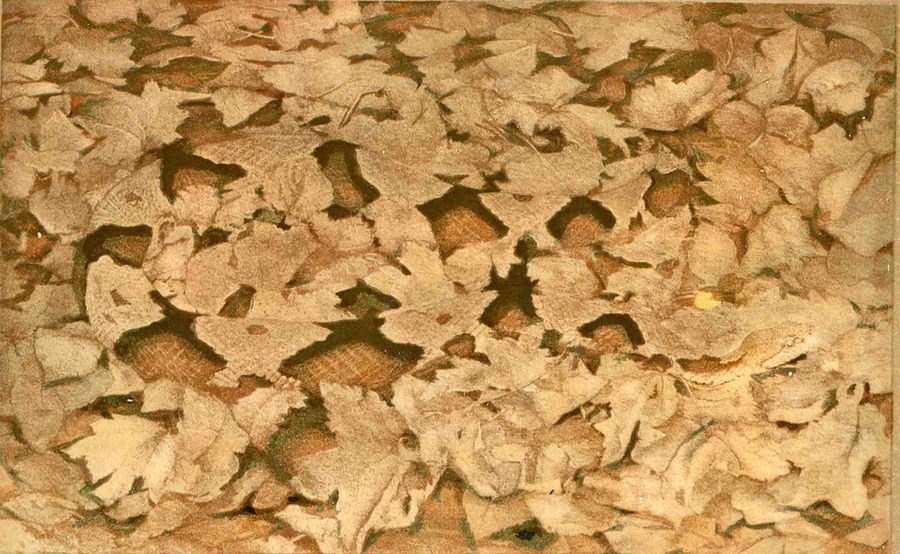
Caption:
These color plates, from the 'Art of Disappearance' portfolio in Hanna Rose Shell's book <i>Hide and Seek,</i> represent the attention paid to naturally existing forms of protective coloration around the time that 'camouflage' got its name, and began to serve as a model for a new set of human technologies of strategic concealment; they draw from the collection of artist and natural historian Abbott Handerson Thayer.
Credits:
Reprinted from <i>Concealing Coloration in the Animal Kingdom</i> (1909)
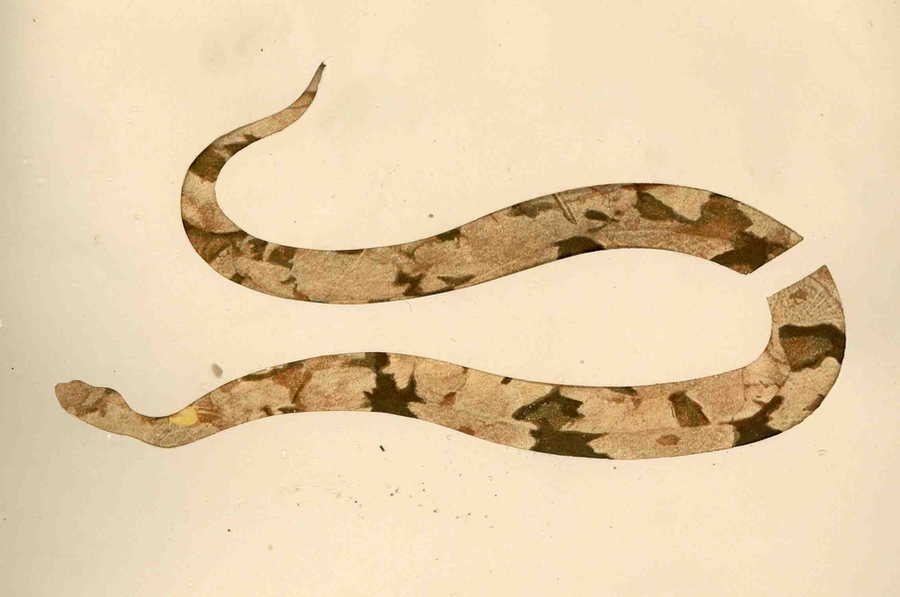
Caption:
These color plates, from the 'Art of Disappearance' portfolio in Hanna Rose Shell's book <i>Hide and Seek,</i> represent the attention paid to naturally existing forms of protective coloration around the time that 'camouflage' got its name, and began to serve as a model for a new set of human technologies of strategic concealment; they draw from the collection of artist and natural historian Abbott Handerson Thayer.
Credits:
Reprinted from <i>Concealing Coloration in the Animal Kingdom</i> (1909)
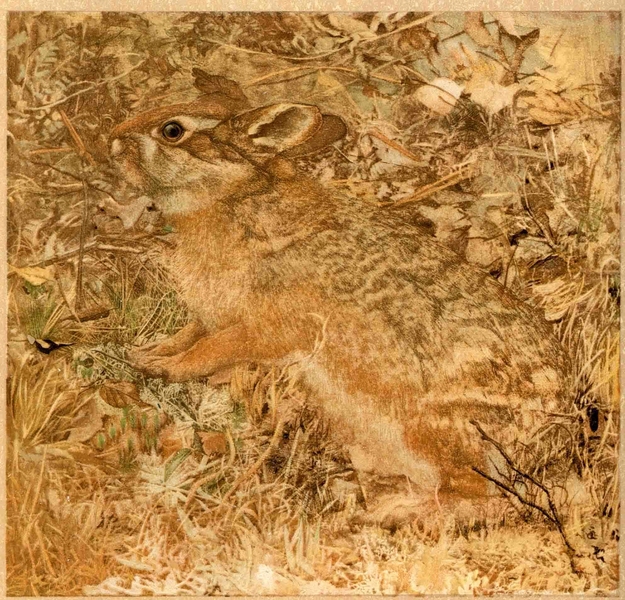
Caption:
These color plates, from the 'Art of Disappearance' portfolio in Hanna Rose Shell's book <i>Hide and Seek,</i> represent the attention paid to naturally existing forms of protective coloration around the time that 'camouflage' got its name, and began to serve as a model for a new set of human technologies of strategic concealment; they draw from the collection of artist and natural historian Abbott Handerson Thayer.
Credits:
Reprinted from <i>Concealing Coloration in the Animal Kingdom</i> (1909)






